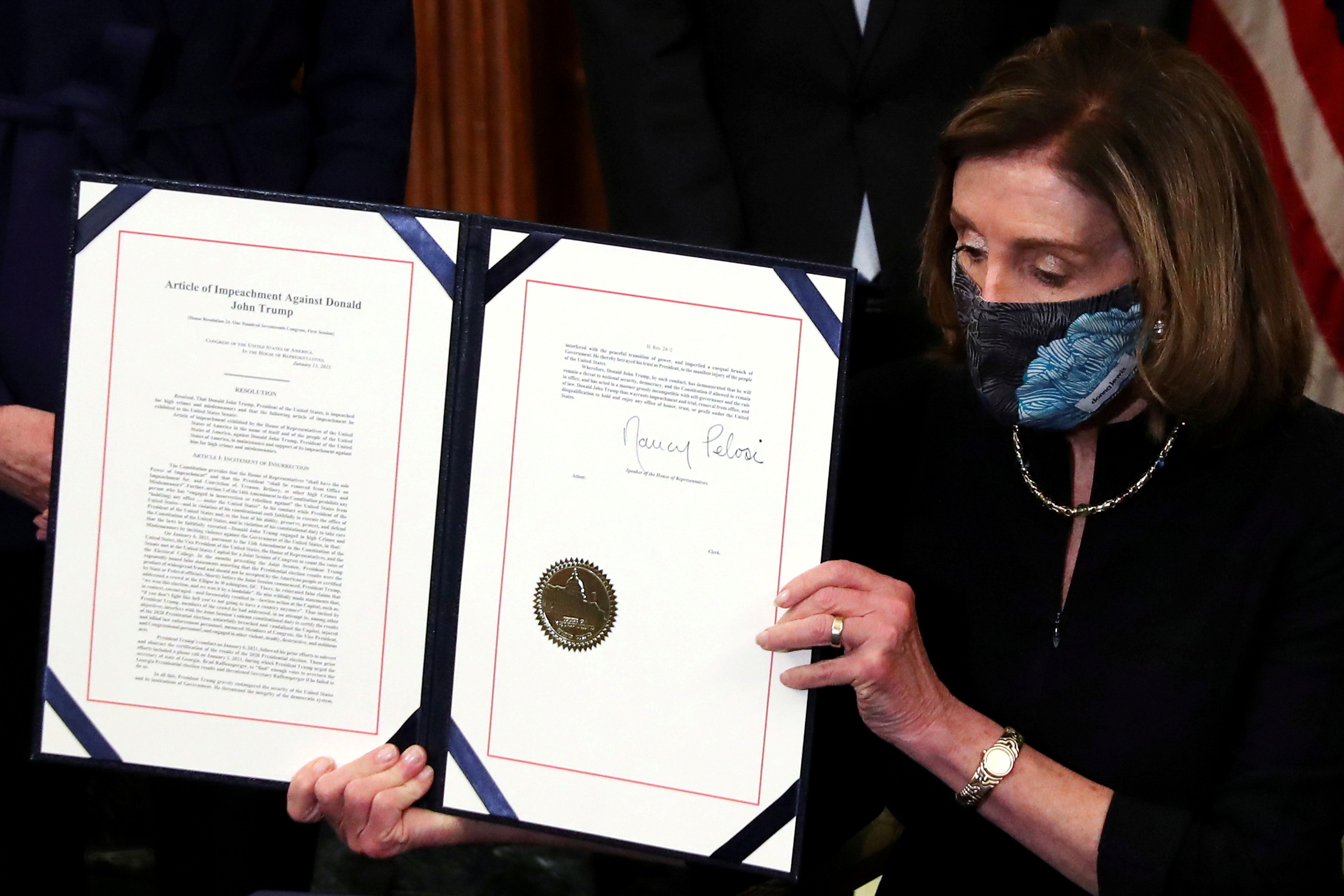Donald Trump’s Second Impeachment

Why did the House of Representatives initiate impeachment?
Impeachment was a response to the incursion of rioters into the Capitol on 6 January in which five people were killed (and two more subsequently died by suicide). Democrats and some Republicans argued Trump was responsible for the course of events that day by inciting the protesters at his nearby rally to march on the building. In the following days, Democrats called for the vice president to invoke the 25th amendment to the U.S. Constitution, which allows a vote of the majority of the Cabinet declaring the president’s unable to carry out his duties, which results in a temporary takeover of power by the vice president. However, Mike Pence refused, so the Democrats who control the House of Representatives launched the impeachment procedure, presenting a single-article allegation—incitement of insurrection. It is based on the 14th Amendment to the Constitution, which forbids people who participated in an insurrection or rebellion against the U.S. government, or who provided assistance or support to its participants from holding federal and state offices (including the office of president).
What will be the next steps in the procedure?
In the following days, the Article of Impeachment will be transferred from the House of Representatives to the Senate, where the second stage of the constitutional removal procedure takes place. Selected members of the House of Representatives, known as impeachment managers, act as prosecutors in the trial, and the president is represented by a team of defence lawyers. In turn, the senators act as the jury, deciding the guilt of the president based on the indictment. Voting is preceded by arguments presented by both sides, possibly including witnesses, followed by a debate between the senators. In the Senate, unlike voting in the House of Representatives, where a simple majority is enough to vote for impeachment, at least two-thirds (67) senators must vote for conviction. This means at least 17 Republicans would have to join the Democrats to convict Trump. That will be difficult, though it is more likely than in last year’s trial when only one Republican senator, Mitt Romney, voted for conviction. This time, some Republicans are considering voting to convict Trump, including Senate Majority Leader Mitch McConnell.
How might the Senate trial affect the new administration’s work?
McConnell announced that he would not begin the Senate impeachment proceedings until Joe Biden is sworn in as president. This means that the trial will start after 20 January, likely after Democrats take control of the Senate. They may further delay the start of the process—for days or even weeks—to not paralyse the initial work of the new administration. After Biden’s swearing-in, the Senate will focus on approving candidates for positions in his administration and participating in legislative initiatives that are a priority from the new president’s perspective, such as the adoption of another stimulus package in connection with the COVID-19 pandemic. The start of the impeachment trial forces the Senate to focus on it and postpone most matters, obstructing the start of Biden’s presidency.
What does the second impeachment mean for Trump’s future?
Possible conviction by the Senate will have no direct consequences on Trump, as he will no longer be the incumbent president. However, the U.S. Constitution allows for a separate vote after conviction to ban him from future federal, elected, and nominee offices. It requires a simple majority of votes, so there is a high probability that this vote would be successful in the new Senate, split evenly but controlled by Democrats through the new vice-president. Such a course of events would make it easier for Republicans to break with the legacy of Trump, which would be excluded from active political life, and to devise a new political programme aimed at conservative voters. It also would prevent Trump from running as an independent in 2024 and posing a threat to the Republican candidate by taking away conservative voters.


